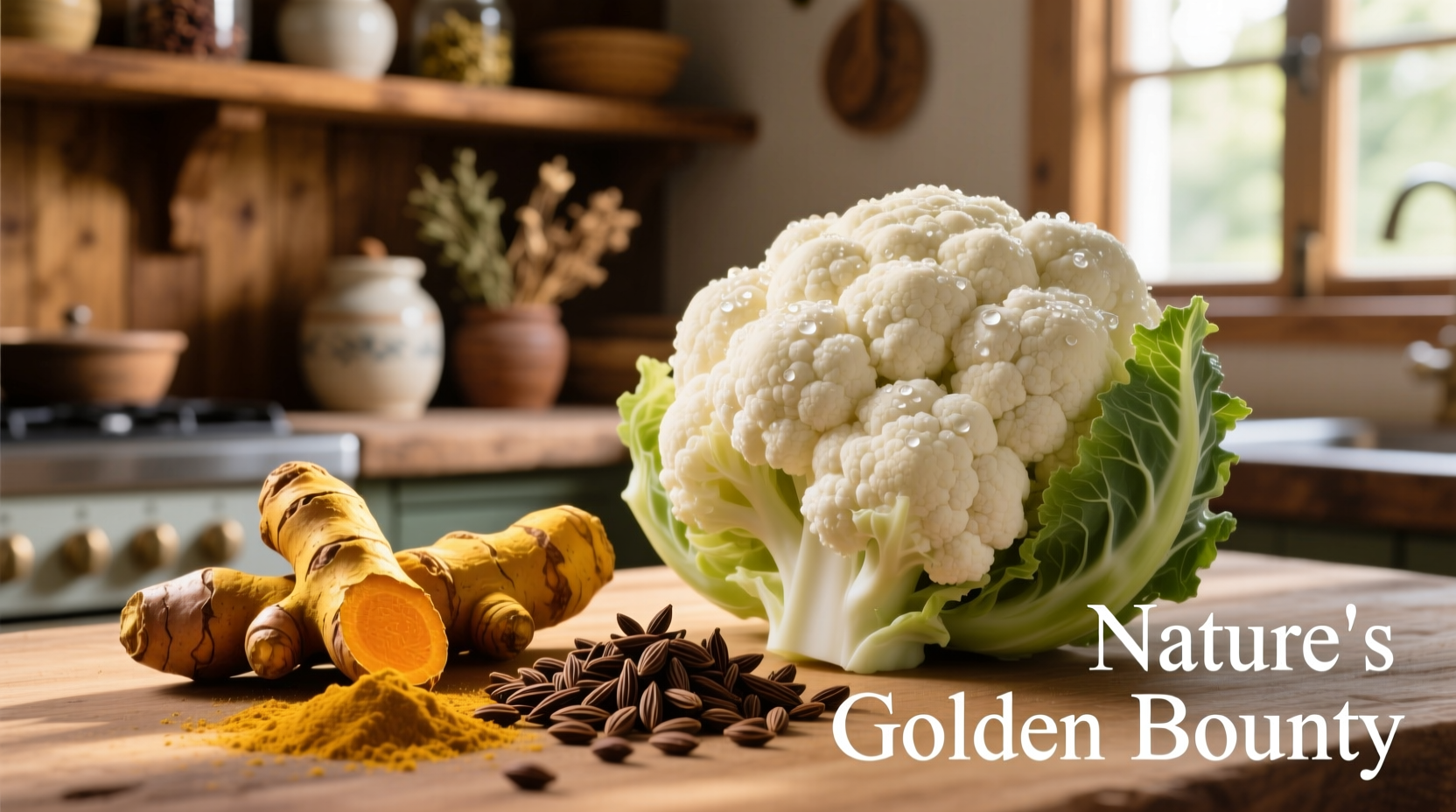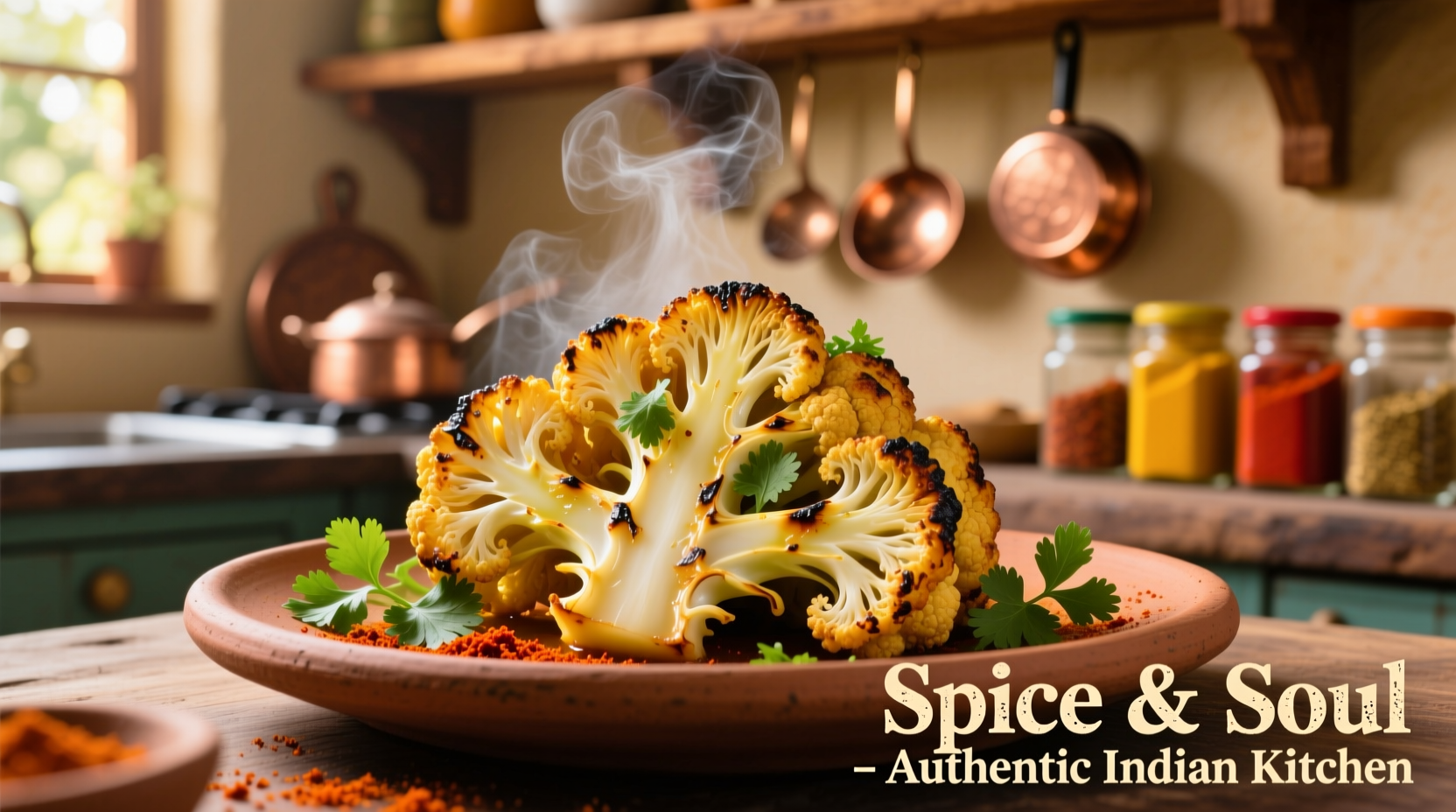Transform ordinary cauliflower into extraordinary Indian dishes with these authentic techniques perfected over generations. Whether you're new to Indian cooking or looking to refine your skills, this guide reveals the precise spice ratios, regional variations, and cooking methods that make Indian cauliflower dishes stand out from ordinary vegetable preparations.
Why Cauliflower Thrives in Indian Cuisine
Cauliflower, known as gobi in Hindi, arrived in India through Portuguese traders in the 17th century but quickly became integral to Indian cooking. Unlike many vegetables, cauliflower's neutral flavor profile perfectly absorbs complex spice blends while maintaining its structure during cooking—a crucial quality in Indian culinary traditions where texture matters as much as flavor.
According to India's National Horticultural Board, cauliflower accounts for 12% of the country's total vegetable production, with Maharashtra, Bihar, and West Bengal leading cultivation. This widespread availability has fostered regional specialties that transform the same vegetable into distinctly different dishes across India's culinary landscape.

Essential Spices for Authentic Indian Cauliflower
The magic of Indian cauliflower dishes lies in the precise combination and timing of spices. Unlike Western approaches that often add spices at the end, Indian cooking builds flavor layers through sequential spice introduction.
| Core Spice | Traditional Use | Regional Variations |
|---|---|---|
| Mustard oil | Northern India tempering base | Coastal regions substitute coconut oil |
| Cumin seeds | First spice added to hot oil | Southern India often combines with mustard seeds |
| Turmeric | Added early for color and earthiness | Kashmiri versions use less for milder color |
| Garam masala | Final sprinkle before serving | Hyderabadi versions include extra cardamom |
Mastering the Critical First Step: Tempering Spices
The foundation of authentic Indian cauliflower dishes begins with tadka (tempering)—the process of heating spices in oil to release their essential oils. This technique, documented in ancient Indian culinary texts like Manasollasa (12th century), creates flavor compounds that raw spices cannot achieve.
For perfect tempering:
- Heat mustard or vegetable oil until shimmering but not smoking (medium heat)
- Add cumin seeds first—they should sizzle immediately
- Follow with asafoetida (hing) within 10 seconds for maximum flavor release
- Add ginger-garlic paste after 30 seconds to prevent burning
Skipping proper tempering results in "flat" flavors where spices taste raw rather than integrated—a common mistake in Western attempts at Indian cooking.
Regional Cauliflower Specialties Across India
India's regional diversity creates dramatically different cauliflower preparations using the same base vegetable:
Northern India: Rich and Creamy Preparations
In Punjab and Delhi, cauliflower appears in Aloo Gobi—a tomato-based curry with potatoes where cauliflower provides textural contrast. The key technique here is partial pre-cooking: blanch cauliflower florets for exactly 3 minutes before adding to the curry base. This prevents mushiness while allowing absorption of the spiced gravy.
Western India: Dry and Crispy Styles
Gujarati Dry Gobi features cauliflower cooked with minimal liquid, creating caramelized edges. The secret lies in cooking on medium-high heat with frequent stirring—approximately 15 minutes until golden brown. Turmeric is added late in cooking to preserve its bright color, unlike northern styles where it goes in early.
Southern India: Tangy and Coconut-Infused
In Kerala, cauliflower appears in gobi thoran—stir-fried with grated coconut, curry leaves, and mustard seeds. The distinctive technique involves dry-roasting coconut before adding to create nutty depth without oil. This preparation typically includes tamarind for sourness rather than tomatoes used in northern versions.
Avoiding Common Texture Mistakes
Perfect cauliflower texture separates authentic Indian preparations from disappointing attempts. Research from the Indian Institute of Food Processing Technology shows cauliflower's pectin structure breaks down rapidly above 85°C (185°F), explaining why:
- Overcooked mushiness: Results from boiling instead of stir-frying or adding cauliflower too early
- Raw center: Occurs when high-heat cooking is too brief to penetrate dense florets
- Soggy exterior: Happens when adding wet ingredients to hot oil causing steam bursts
The solution: Cut uniform 1.5-inch florets, blanch for exactly 3 minutes if using in curries, or stir-fry directly for dry preparations. Add cauliflower to hot (not smoking) oil and resist stirring for the first 2 minutes to develop caramelization.
Authentic Gobi Manchurian: Indo-Chinese Fusion
This popular street food originated in Kolkata's Chinese community and demonstrates how Indian techniques transform foreign concepts. Unlike Chinese-American versions, authentic Gobi Manchurian features:
- Cauliflower dipped in chickpea flour batter (not cornstarch)
- Fried at precise 350°F for golden crispness without oil absorption
- Sauce built on ginger-garlic base with Indian green chilies (not bell peppers)
- Final toss with fresh cilantro (coriander leaves) for brightness
The key difference from Westernized versions is the sauce balance—authentic preparations maintain equal parts sweet, sour, and spicy notes without overwhelming soy flavor.
Serving Traditions and Modern Adaptations
Traditionally, Indian cauliflower dishes accompany:
- Basmati rice (never jasmine or other varieties)
- Whole wheat roti or naan
- Raita (yogurt condiment) to balance spices
- Raw onion slices for textural contrast
Modern adaptations include cauliflower rice versions for low-carb diets and air-fried Gobi Manchurian for reduced oil content while maintaining texture. However, traditionalists argue these adaptations sacrifice the essential oil-mediated flavor transfer that defines authentic Indian cooking.
Preserving Nutritional Benefits
While delicious, Indian cauliflower preparations maintain significant nutritional value. According to research published in the Indian Journal of Nutrition, the vitamin C retention in properly cooked Indian-style cauliflower remains high because:
- Shorter cooking times (10-15 minutes) preserve nutrients
- Tomato-based sauces provide lycopene that enhances nutrient absorption
- Healthy fats from mustard oil improve bioavailability of fat-soluble vitamins
This explains why traditional Indian cooking methods create dishes that are both flavorful and nutritionally balanced—a principle documented in Ayurvedic food science for centuries.











 浙公网安备
33010002000092号
浙公网安备
33010002000092号 浙B2-20120091-4
浙B2-20120091-4